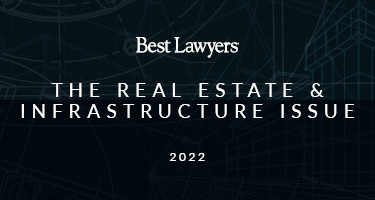Background
In 1986, a corporation (“Original Owner Corp”), sole owner of a multi- building real estate parcel (“Premises”) in a New York City borough, subdivided sections of the single, multi-building Premises parcel into five separate legal subdivisions and five separate real estate Tax Lots owned by four separate parties.
Prior to effecting the subdivision of the Premises, Original Owner Corp entered into an agreement, entitled “Grant of Permanent Easement” (the “1986 Easement”), with four parties “and all other proposed purchasers, subsequent purchasers, leases, assignees, tenants, and heirs of any and all parts of said parcel” (the “Original Grantees”), who were granted certain permanent rights therein “as a secondary means of ingress and egress for the benefit of all those using the sub-divided premises and the Central Stairway,” for the purpose of establishing “a permanent right of way, alley or corridor . . . forever through the rear part of the present parcel from the Central Stairwell through a parcel that will be known as [XXXX] and through the yard adjoining said proposed divided property; which will be filed in the proposed plans of the subdivision of the parcel herein.”
The 1986 Easement expressly provided:
(a) That [Original Owner Corp conveyed] forever “to all signers herein, purchasers, leasees, assignees, tenants, heirs or assigns; a permanent right and easement from all the proposed divided property; from the fourth floor, third floor, second floor, main floors, stairs and stairwell; and then continuing on the main floor through a five foot corridor or alley of said property in the rear of said divided parcel herein; and continued through a yard of said property leading out thereat to the street, and for buildings A,B & C, on the 2nd, 3rd and 4th floor, either a similar corridor or alternatively, by construction of an internal stairway through Building B existing on each of the 2nd, 3rd & 4th floors all as shown on the diagram annexed hereto;” and
(b) That “the easement granted herein is subject to the equal rights of all persons who are or become subsequent purchasers, leases, tenants or assignees of any portion of said divided or undivided section of the present premises known on Tax Map, Section X, Block XXXX, Lot XX in the County of XXXXX, and such easement shall only continue so long as it is necessary for the existence of a secondary exit as hereinabove stated.
The 1986 Easement was duly executed by the Original Owner Corp and all Original Grantees and duly acknowledged in accordance with all legal requirements.
However, for reasons unknown, the 1986 Easement, apparently, was not filed together with the NYC Department of Finance “Recording and Endorsement Cover Page” (“NYC Cover Page”), as was otherwise indicated on the NYC Cover Page, and, therefore, the 1986 Easement was not officially “recorded.”
The 2019 Purchase and Sale Agreement
In February 2019, one of the Original Grantees to the 1986 Easement, as Seller, entered into a Purchase and Sale Agreement (“PSA Agreement”) for the sale of one of the five subdivided Lots subject to said easement (the “Seller’s Lot”) to a purchaser vendee, as the buyer, of the Seller’s Lot.
Subsequent to the execution of the PSA, the buyer’s lender would not approve the buyer moving forward to closing “due to a cloudy title caused by an easement that supposedly had not been filed correctly.” The parties adjourned the closing date in accordance with terms of the PSA to give the seller time to clear the apparent cloud on title.
The seller and the seller’s transactional counsel attempted to clear the title issue by inviting the successors of the other three original grantees, and current owners of the remaining Lots to the Premises (the “Other Current Owners”), to jointly enter into a new updated easement agreement that could be presently recorded to facilitate the closing and the consummation of the sale to the buyer. After presenting the proposed updated easement agreement to the Other Current Owners, one or more of the Other Current Owners delayed giving their acceptance of the updated agreement and made disingenuous demands for changes in the document, which the seller perceived to be veiled extortionate demands for monetary compensation knowing that the seller was under pressure to consummate the sale before the expiration of the adjourned closing date. The seller did not want to give in to that extortion demand.
Client Comes to Adam Leitman Bailey, P.C.
At that point, the seller came to the attorneys at Adam Leitman Bailey, P.C. seeking advice on how to motivate the Other Current Owners to cooperate in the filing of the proposed updated easement agreement. Adam Leitman Bailey, P.C. drafted a strong cease and desist letter addressed to all of the Other Current Owners advising that (a) their continued delay and obfuscation, in executing the proposed updated easement agreement, constituted tortious interference with contract between the seller and the buyer, and (b) that they would be held responsible for any damages suffered by the seller, if the buyer were to deem the seller in breach of the PSA by the seller’s inability to clear the title issue because of their bad faith tactics.
In the meantime, Adam Leitman Bailey, P.C. attorneys also explored the possibility of simply filing the 1986 Easement for recording and thereby avoiding altogether the perceived need for any agreement from the Other Current Owners.
In response to Adam Leitman Bailey, P.C. attorneys’ suggesting that course of action to the seller’s transactional attorney, transactional counsel advised that the seller did not have an original signed copy of the 1986 Easement, but only a PDF copy of the fully executed document – which the seller’s transactional attorney said would not be accepted for recording purposes by the County Clerk, through the New York City Automated City Register Information System (ACRIS), which, as counsel advised, accepts for official recording ONLY fully executed original documents, and not copies of documents. Transactional counsel advised “Unless things have changed, at a minimum you need ACRIS forms to record. We don’t have that. ACRIS needs all signatories to sign. Plus, you (usually) need an original to record. Which we don’t have. Am I missing something?”
Adam Leitman Bailey, P.C. Plans for Obtaining Client’s Objective
Undeterred by transactional counsel’s opinion, Adam Leitman Bailey, P.C. attorneys proceeded to determine whether a title company (either the buyer’s title company or one employed by Adam Leitman Bailey, P.C.) would be willing to file the existing 1986 Easement which, albeit in PDF format, was a valid binding agreement of the Original Grantees that ran with the land and still binds their heirs and successors, and the terms of which all parties had uniformly observed without objection from 1986 to the present.
First, Adam Leitman Bailey, P.C. attorneys determined that the buyer’s title report did NOT show the unrecorded 1986 Easement as an Exception to title insurance coverage if the transaction were consummated.
Second, Adam Leitman Bailey, P.C. attorneys determined that the PDF copy of the 1986 Easement could be filed and recorded as an “ancient document” under New York common law, upon the following analysis:
(a) Under CPLR 4539(a), the document was an accurate reproduction of “a writing” that has been “kept . . . in the regular course of business . . . which accurately reproduces . . . the original . . . when satisfactorily identified . . . whether the original is in existence or not, when
(b) Under CPLR 4539 (b), the reproduction is “created by any process which stores an image of any writing . . . which does not permit additions, deletions, or changes without having a record of such additions, deletions, or changes” [which includes PDFs] and where
(c) Under CPLR 4538, the document was certified or acknowledged in the manner prescribed by law “for the taking and certifying the acknowledgement or proof of a conveyance of real property” as evidence “that it was executed by the person who purported to do so.”
Adam Leitman Bailey, P.C. Successfully Achieves Client’s Objective
Accordingly, Adam Leitman Bailey, P.C. attorneys prepared an affidavit for the seller to be filed with the 1986 Easement that would confirm:
(a) that he was familiar with the 1986 Easement;
(b) that the seller was familiar with his father’s signature;
(c) that the signatory of both Grantor Original Owner Corp and the seller’s corporate grantee was the seller’s father;
(d) that the seller’s father’s signatures on behalf of both the Original Owner Corp and of the seller’s corporate Grantee were certified and acknowledged, in the manner prescribed by law for taking and certifying the acknowledgement or proof of a conveyance of real property, as evidence that the Grant of Permanent Easement was executed by the person who purported to be the seller’s father;
(e) that the original signed Grant of Permanent Easement document, as executed by all parties thereto, is lost and cannot be found in the seller’s corporate files;
(f) that the PDF copy was a reproduction of a duplicate original of the Grant of Permanent Easement which reproduction is understood to have been created by an electronic process that stores an image of a writing and that does not permit additions, deletions, or changes without have a record of such additions, deletions, or changes;
(g) that the PDF copy is an accurate reproduction of the duplicate original that has been kept in the seller’s corporate files in the regular course of the seller’s corporate business;
(h) That (i) the PDF Copy of the duplicate original Grant of Permanent Easement has been kept as a business record of the seller’s corporation, as a record of the execution of the duplicate original Grant of Permanent Easement; (ii) the duplicate original Grant of Permanent Easement was made in the regular course of the business of the seller’s corporation; and (iii) it was in the regular course of the business of the seller’s corporation, to make the duplicate original Grant of Permanent Easement at the time of the act and transaction recorded therein; and
(i) that the seller has been further advised by counsel that the PDF Copy of the duplicate original Grant of Permanent Easement, as authenticated in the seller’s affidavit, qualifies as an accurate copy of an ancient document under New York State common law and is thereby entitled to be filed and recorded as a public record.
After both the buyer’s title company and a title company employed by Adam Leitman Bailey, P.C. declined to attempt to file the 1986 Easement with the seller’s affidavit, Adam Leitman Bailey, P.C. attorneys and paralegal staff personally undertook to file and record the 1986 Easement with the County Clerk. As expected the County Clerk’s Office reviewer posed numerous questions to Adam Leitman Bailey, P.C.’s paralegal staff, in the course of several back and forth conversations, to which Adam Leitman Bailey, P.C. staff responded with appropriate and informed answers. As a result of Adam Leitman Bailey, P.C.’s persistence in giving satisfying answers to all of the questions posed, the County Clerk ultimately accepted the 1986 Easement, in PDF format, for recording in the NYC Register.
Accordingly, by reason of the timely recording of the 1986 Easement, the seller’s transactional counsel was able to advise the buyer that the seller had thereby complied with all of the seller’s obligations under the PSA, and that the buyer was obliged to consummate the transaction on the agreed adjourned Closing date, as “Time Is Of The Essence.”
As a result of the knowledge and resourcefulness of Adam Leitman Bailey, P.C.’s attorneys and paralegal staff, the seller was extricated from the dilemma he faced between being subject (a) on the one hand, to extortionate demands from one or more of the Other Current Owners, and (b) on the other hand, being unable to consummate the transaction, as he had been advised by transactional counsel, due to the mistaken perception of the seller’s inability to file and record the 1986 Easement in PDF format.
* * * *
The Adam Leitman Bailey, P.C. attorneys who worked on this matter were Adam Leitman Bailey, John M. Desiderio, and Andrew Jorges, with the very able assistance of Adam Leitman Bailey, P.C. Paralegal Sophia Bule.


























